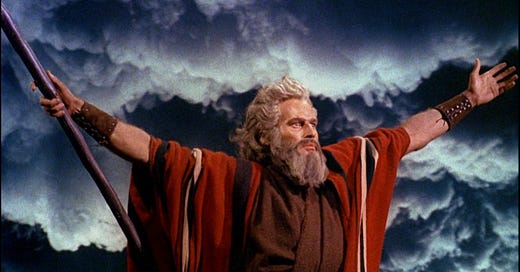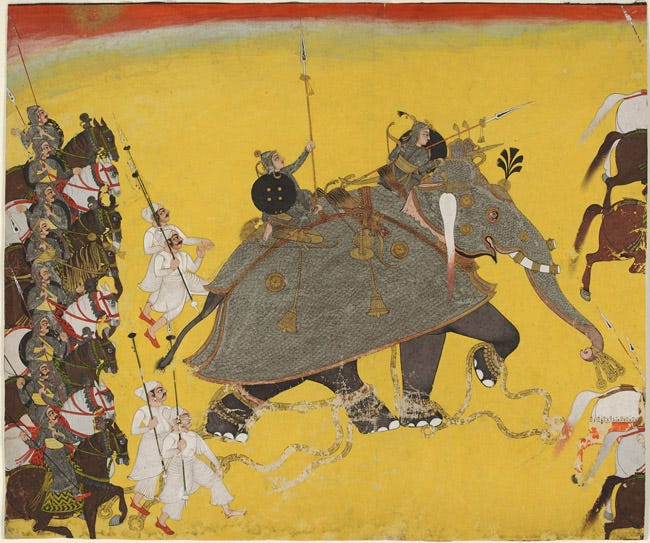God’s Generals, a 2016 book by military historian Richard A. Gabriel, is not to be confused with several similarly titled books, including Gods and Generals. Gabriel’s book examines Moses, the Buddha, and Mohammad as military figures engaged in and shaped by warfare.
Gabriel’s approaches each from a secular, military-historical perspective. He draws on sacred scriptures for his evidence but gives them no divine authority. Thus he assumes them fallible documents prone to mistake and exaggeration. He seeks earthly explanations for miraculous events, and interprets these influential prophets in the same light as other social and political leaders.
Epistemic Status: Beats me. I’m not a historian, and I’ve never read any Buddhist or Muslim texts. As far as I can tell Gabriel’s interpretations are all speculative (edit: and at least in the case of the Moses they contradict a lot of archaeological opinion), but it’s fun speculation.
The Buddha
The Buddha is the most surprising one on the list. Wasn’t he a pacifist? A wandering ascetic spending his life in meditation?
Gabriel starts with the Buddha’s background: He was born into the Kshatriya caste, a warrior aristocracy descended from the Aryan people who invaded India and conquered its Dravidian inhabitants in the Early Vedic Period of (1500-900 BC).
The social order they initially imposed was tribal, without strong central rulers or large political units. But it also had clear class distinctions that soon evolved into the caste system. The Vedic social order gradually gave way to larger and more bureaucratic states, but it “persisted most strongly in the janapada republics, like the Sakays from which Buddha came. By 600 BC, the many janapadas of northern India had coalesced into sixteen large states, all constantly at war with one another” (p.85).
As with warrior aristocracies everywhere, war wasn’t just a means to the end, but something valued by the culture:
“Without war in which to demonstrate status and personal bravery, the Aryan Kshatriya had no reason to live. In various texts, war is compared to a yajna or Vedic sacrifice and he who fights it enjoys the same benefits, i.e. the attainment of heaven…In the Aryan tradition, war the normal activity of the state, and as soon as the king gained power he was expected to begin to attack his neighbours” (p.86).
The rival states fought according to a kind of code of honor in which a morally righteous war allowed the defeated enemy regime to survive while paying tribute to the victor. In practice, this meant that the various polities lived to fight another day, and the cycle of perpetual but limited war continued without the creation of any centralized empire to enforce internal peace. Gabriel compares it to the battles of Greek city states prior to Alexander’s conquests, with perpetual but indecisive wars governed by a kind of sportsmanship.
A Feast for Crows
By the Buddha’s (563 to 483 BC) time polities were larger and wars less restrained. There were four large states – Magadha, Kashi, Kosala, and Vrijis – in a violent struggle for supremacy that saw the destruction of most of the remaining tribal kingdoms. After Buddha’s death this Game of Thrones would end with the establishment of India’s first empire under Chandragupta Maurya. In the meantime, there were frequent wars and conquests, with all the associated suffering among the populace.
At this point Gabriel reminds us just how traumatic war was for agrarian people. Not only did the battles themselves result in fields littered with corpses and soaked with blood. Military encampments bred epidemic disease that killed more men than the battles, and that would have then spread to surrounding towns and villages. And in a world without modern supply chains, armies ate their way across the land, leaving famine in their wake, even when marching through friendly territory.




